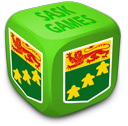Game Review: 1066, Tears To Many Mothers
Started by Black_Wolf, December 04, 2019, 03:09:58 PM
Previous topic - Next topic0 Members and 2 Guests are viewing this topic.
Go Down
Pages1
Go Up
Pages1
User actions
